Amazona Zoo
|
South American Animals in Cromer! |
|
An Introduction to Amazona Zoo in Cromer
|

After 2 years of development, 10 acres of derelict woodland and abandoned brick kilns on the outskirts of Cromer have been transformed into a home for a wide range of tropical South American animals, including Jaguar, Otters, Monkeys and Flamingos. All the animals have arrived from other zoos and none have been imported from the wild. The park style zoo, has a network of paths and viewing areas, where visitors can see the animals close-up; signs tell you what you are looking at and help you understand about their natural habitat and how they relate to more well-known animals. There is a cafe overlooking the lake, a picnic area, children's play area and a gift shop. |
|
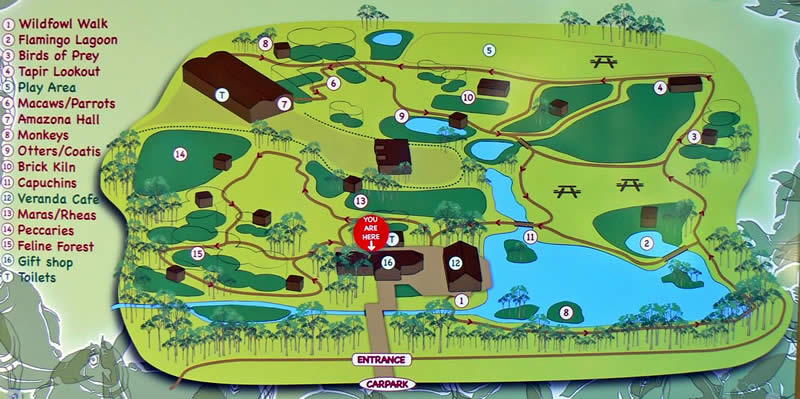
Click to open a larger plan of the Zoo |
|
| |
|
Amazona Zoo Guided Picture Tour
|
We start our tour of Amazona Zoo by parking the car in the generous sized car-park and walking over the decking to the entrance. You immediately discover that you are in a small part of South American forest, in the heart of North Norfolk!! |
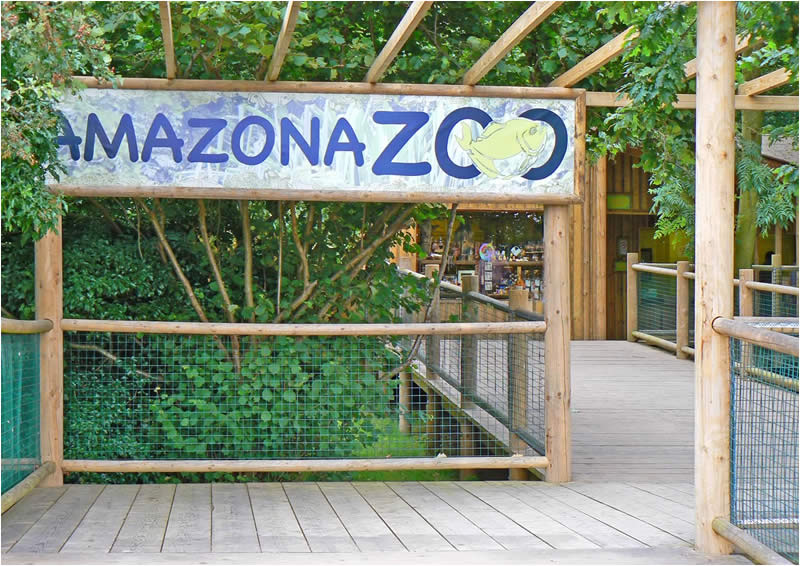
The entrance of Amazona |
One of the first areas we come across is Flamingo Lagoon. This green soup contains Chilean Flamingo, a species dating back some 30 million years or so! They live in inhospitable places, where few other animals can live and as a consequence, are relatively free of predators. You can see them wading about and standing on their characteristic one leg. |
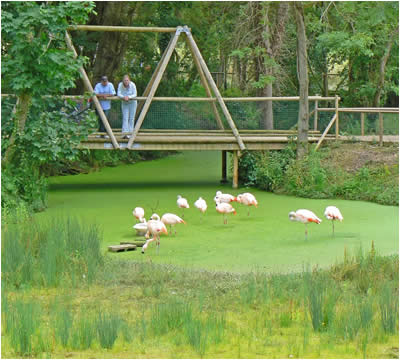
Overlooking Flamingo Lagoon |
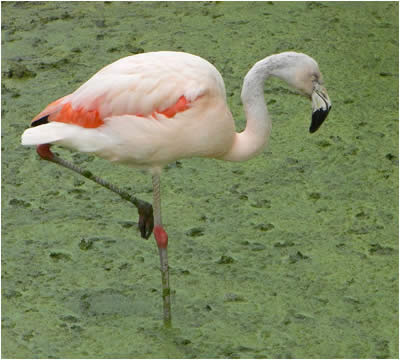
Chilean Flamingo |
Looping back over the bridge, we find the Wildfowl Walk, where various kinds of water birds can be seen. The walk offers good views over the lake towards the main zoo buildings. |
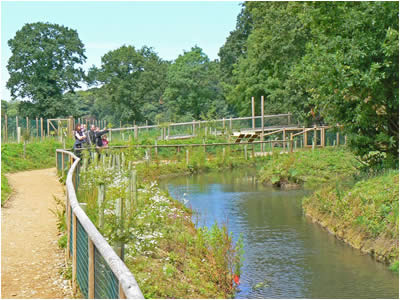
Wildfowl Walk |
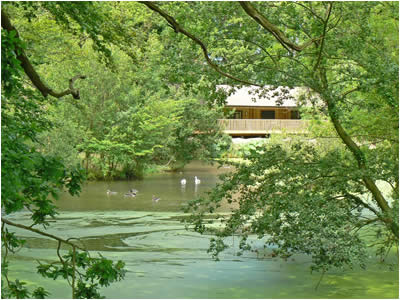
Views over the Lake |
The central area of the park is taken up by the Tapir Lookout and picnic area. A Tapir is related to the Rhinocerous and can be found in Central American rainforest. The unusual snout is used to uproot water plants for food and it can also swim, using its snout to breath as it hides underwater. The muddy enclose is shared with Capybara, which is actually a large rodent! these are excellent swimmers and usually can be found in pairs. |
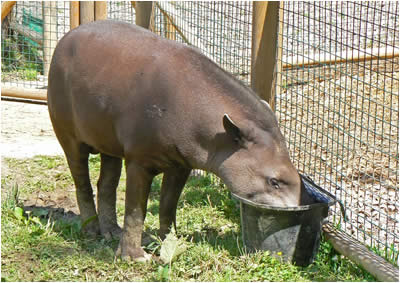
An eating Tapir |
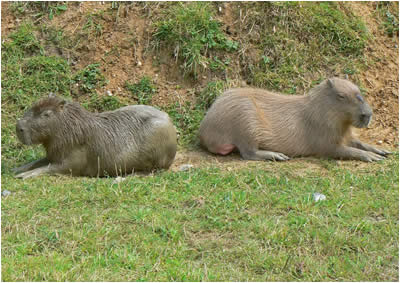
Resting Capybara |
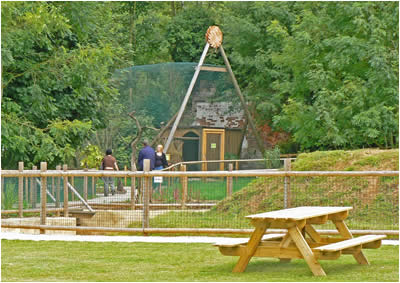
The picnic area |
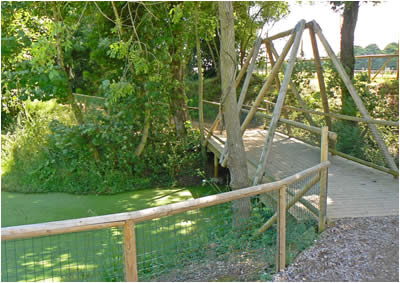
Paths lead you around the park |
At the top of the park, we pass the children's play area and come across two other types of cheeky monkey! The first is the Maramoset, which are highly active, colourful, but small monkeys; they live high in the upper canopy of forest trees, and feed on insects, fruit and leaves. The Spider Monkey is an outstanding climber and is one of the most agile primates in the world. They live in small groups in undisturbed South American forest and their existence is threatened by the clearance of forest for agriculture. |
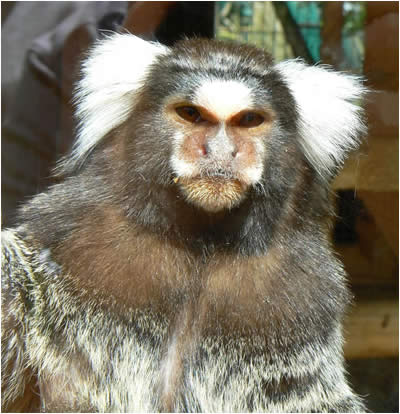
A cheeky looking Maramoset |
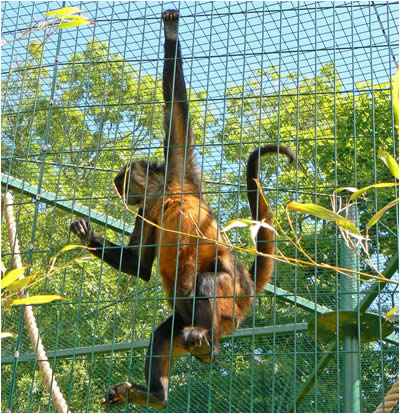
Spider Monkey Climbing |
Various types of colourful South American bird can be found around the zoo, some cute and chirping away; but don't be tempted to put any fingers through the bars of the cage - as the signs clearly warn - they can bite! |
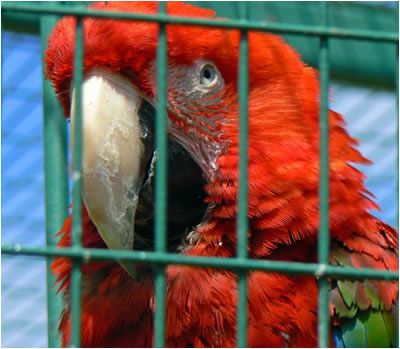
A colourful Parrot |
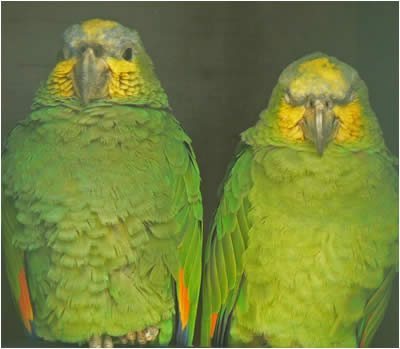
Birds that resemble Norwich City fans watching a match at Carrow Road! |
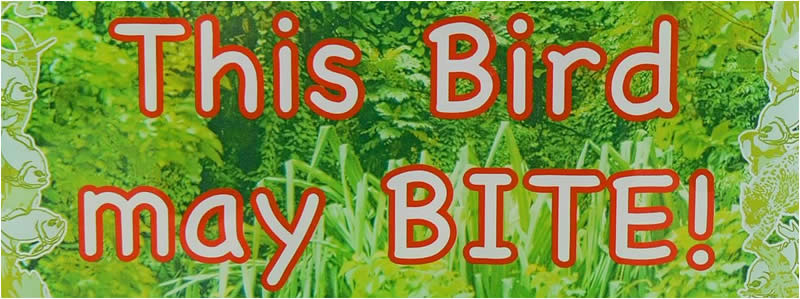
Do not stick your fingers through! |
We now enter Amazona Hall, an indoor section of the Zoo, with plenty of creatures to scare you! As you enter the hall, you realise that you are walking directly above the Crocodile pool - with some small snappers to admire; one wonders what these will be like in a few years time, when they have grown a bit! Other little treats in the hall include, piranha fish, snakes and various other types of reptile, some of which are housed in a dark tunnel. |
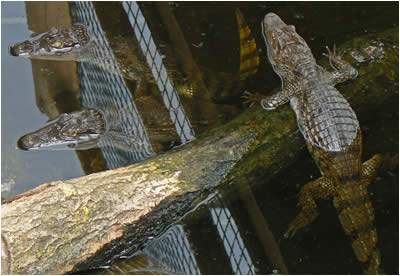
Young Crocodiles |
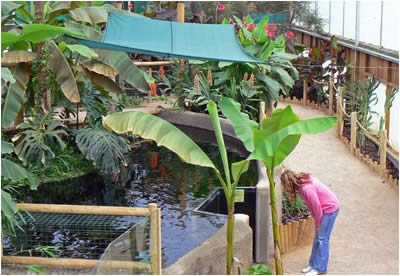
Inside Amazona Hall |
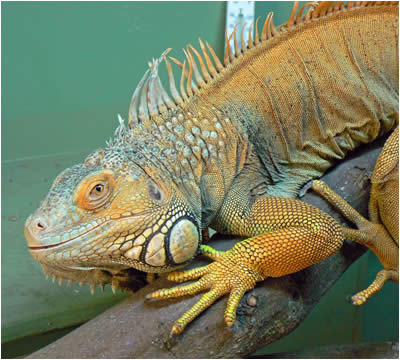
Reptiles in the dark tunnel |
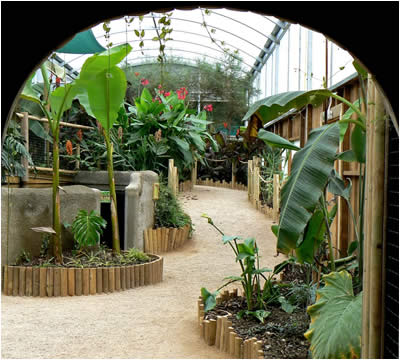
Amazona Hall Tunnel |
Over the other side of the park is Feline Forest, one of the highlights of Amazona Zoo. The Jaguar is the 3rd largest cat in the world, and you will find them prowling around their enclosure looking for something to ambush. Nearby are a couple of Pumas, which pace up and down all day long; these restless cats usually feed on deer. Other animals found in this section include Rhea (Emu) and Mara, which are actually large Hare, but resemble small deer and are to be found on the grassland of central and southern Argentina. |
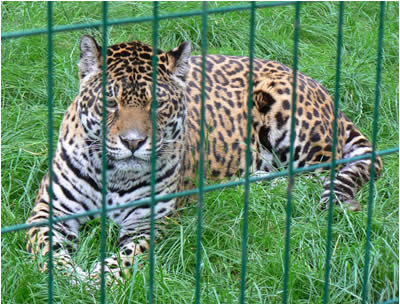
The Jaguar Enclosure |
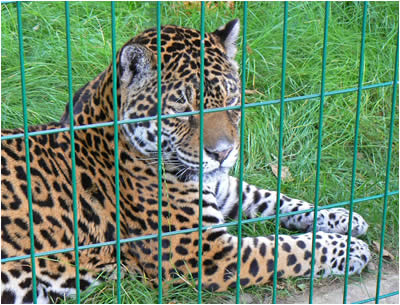
A resting Jaguar |
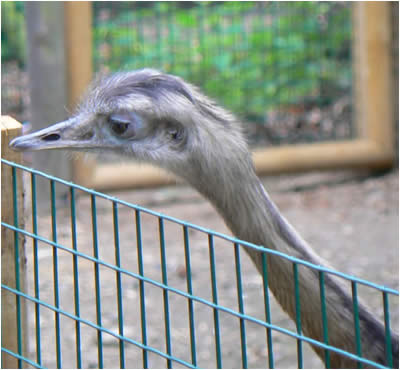
Rhea peering over the fence |
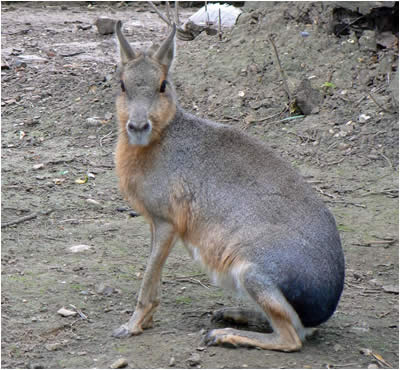
Mara staring at the visitors |
At the end of your journey through the forest, swamp and grasslands of South America, you may like to take a rest in the Cafe, overlooking the lake; or browse the gift shop, which sells everything animal related from cuddly toys, to animal puppets, DVD's and music! |
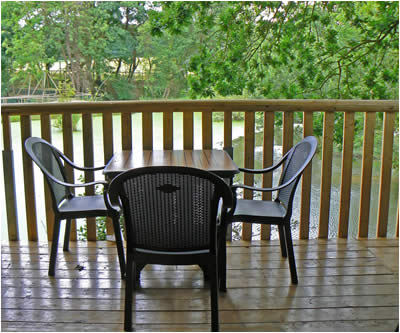
Cafe with veranda overlooking the lake |

Cuddly monkeys in the gift shop |
Amazona Zoo Summary of What to SEE and DO
|
|
 Feline Forest and the Jaguars |
 Amazona Hall and its reptiles! |
 The Monkeys |
 Flamingo Lagoon |
 The Parrots and the Birds of Prey |
 Wildfowl Walk |
| |
The zoo can found just south of Cromer. It is well signposted (follow Zoo Park) or set your SAT NAV to NR27 9JG. The zoo is open 10am to 5pm daily (April to October). Entry costs £8.50 for adults, children £6.50. Tel: 01263 510741 |
|
Our Verdict
|
What a great day out for all the family! it makes a complete change from other tourist attractions in the immediate area, and for a local zoo it is a decent size with plenty of unusual animals to see. |
|
|
TOUR INDEX |
|
|
|
|
|
|
|
|
|
|
|
|
NEARBY PICTURE TOURS |
|
|
|
|
|
|
MORE OF OUR WEBSITES |
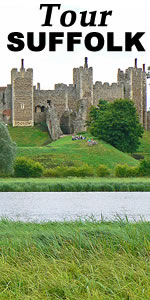 |
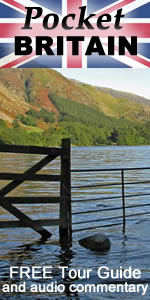 |
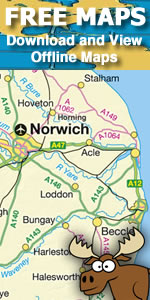 |
| |
|

